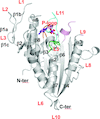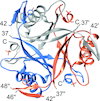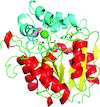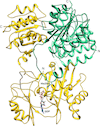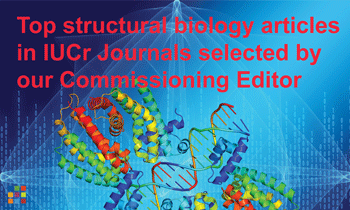issue contents
March 2021 issue

Cover illustration: The first long-chain-alginate binding mode revealed in the structure of the substrate-binding cleft of AlyF [Zhang et al. (2021), Acta Cryst. D77, 336-346]. Alginate is the most abundant linear polysaccharide from brown algae, and the products of its degradation, alginate oligosaccharides (AOS), have potential applications in many areas, including functional foods and marine drugs. The preparation of well defined AOS using alginate lyases has attracted much attention in recent years. However, a lack of structural insight into the whole substrate-binding cleft for most known alginate lyases severely hampers their application. To resolve this issue, a single-domain PL6 family alginate lyase, AlyF, was cocrystallized with the longest bound substrate in all solved alginate lyase complex structures. Structural results provide the first possible alginate lyase-substrate binding profile for long-chain alginates, facilitating the rational design of new enzymes for industrial purposes.
ISDSB2019

 access
access access
access access
accessCCP-EM
 access
accessresearch papers
 access
access

 journal menu
journal menu












